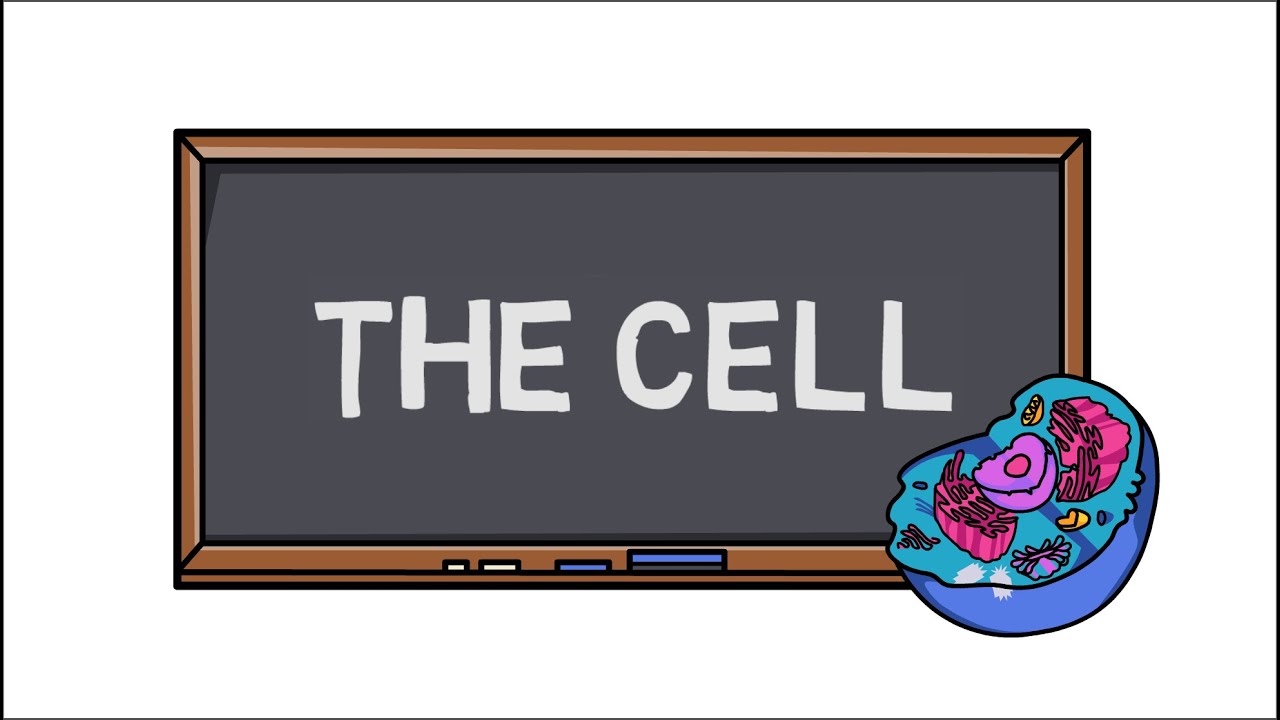Biologi Sel - Materi Biologi SMA dan Ujian Mandiri | Part 1
Summary
TLDRThis video explores the fundamentals of cell biology, beginning with the discovery of cells by Robert Hooke and Antony van Leeuwenhoek. It covers key milestones in cell theory, including the contributions of Matthias Schleiden, Theodor Schwann, and Rudolf Virchow. The video explains the core principles of cell theory, such as all living organisms being made up of cells, cells being the smallest unit of life, and all cells arising from pre-existing cells. It also highlights modern advancements in the theory, including the functional and hereditary roles of cells, DNA, and RNA.
Takeaways
- 😀 Robert Hooke was the first to observe cells in cork and coined the term 'cell' after comparing them to the rooms of a monastery.
- 😀 Antony van Leeuwenhoek used a simple microscope to discover microorganisms, calling them 'animalcules,' which laid the foundation for microbiology.
- 😀 Matthias Schleiden, a botanist, concluded that plants are made of cells, while Theodor Schwann, a zoologist, discovered that animals are also composed of cells.
- 😀 Cell theory was established with three main principles: all living organisms are made of cells, cells are the smallest functional units of life, and all cells come from pre-existing cells.
- 😀 Rudolf Virchow expanded the cell theory by asserting that 'all cells arise from pre-existing cells,' completing the understanding of cell formation.
- 😀 The cell theory is foundational to biology, asserting that cells are the building blocks of life in all organisms, whether unicellular or multicellular.
- 😀 Modern cell theory adds that cells perform all life functions, including metabolism, energy transfer, and genetic information processing.
- 😀 DNA and RNA within cells are crucial for storing and transmitting genetic information, forming the basis of heredity.
- 😀 The cell is the smallest structural and functional unit of living organisms, meaning it cannot be broken down further while still maintaining life processes.
- 😀 Advancements in cell theory have led to discoveries in genetics, medicine, and biotechnology, with an increased understanding of cellular roles in organism function.
Q & A
Who was the first scientist to observe cells and what did he observe?
-Robert Hooke was the first scientist to observe cells. He observed cork from plants under a microscope and noticed small, room-like structures, which he named 'cells'.
Why did Robert Hooke name the structures he observed 'cells'?
-Robert Hooke named the structures 'cells' because they resembled the small rooms in a monastery, which are called cells.
What did Antonie van Leeuwenhoek contribute to the study of cells?
-Antonie van Leeuwenhoek contributed by designing a simple single-lens microscope and observing tiny organisms in various substances, which he called 'animalcules', now known as microorganisms.
How did Antonie van Leeuwenhoek's microscope differ from Robert Hooke's?
-Antonie van Leeuwenhoek's microscope was simpler and used a single lens, whereas Robert Hooke used a more complex compound microscope.
What key observation did Matthias Schleiden make about plants?
-Matthias Schleiden, a botanist, observed that all plants are made up of cells, which was a significant step in the development of cell theory.
What did Theodor Schwann discover regarding animals?
-Theodor Schwann, a zoologist, concluded that all animals are also made up of cells, further supporting the idea that all living organisms are cell-based.
What is the basic principle of cell theory proposed by Schleiden and Schwann?
-Schleiden and Schwann proposed that all living organisms are made up of cells, and cells are the basic structural and functional units of life.
What additional component did Rudolf Virchow add to cell theory?
-Rudolf Virchow added that all cells arise from pre-existing cells, completing the third part of the cell theory.
What is the modern definition of a cell in the context of biology?
-In modern biology, a cell is defined as the smallest structural and functional unit of life that can carry out biological processes like metabolism, and contains genetic material such as DNA and RNA.
What are the major functions of cells as described in the modern understanding of cell theory?
-Cells are responsible for running metabolic processes, carrying genetic information through DNA and RNA, and being the smallest units of both structure and function in living organisms.
Outlines

このセクションは有料ユーザー限定です。 アクセスするには、アップグレードをお願いします。
今すぐアップグレードMindmap

このセクションは有料ユーザー限定です。 アクセスするには、アップグレードをお願いします。
今すぐアップグレードKeywords

このセクションは有料ユーザー限定です。 アクセスするには、アップグレードをお願いします。
今すぐアップグレードHighlights

このセクションは有料ユーザー限定です。 アクセスするには、アップグレードをお願いします。
今すぐアップグレードTranscripts

このセクションは有料ユーザー限定です。 アクセスするには、アップグレードをお願いします。
今すぐアップグレード関連動画をさらに表示

Sejarah penemuan sel - materi biologi bab sel kelas

Struktur dan Fungsi Sel || Microteaching KD 3.1 Kelas XI Semester 1

Introduction to Cell Biology

Sistem Organisasi Kehidupan | Sel sebagai Unit Struktural dan Fungsional Kehidupan - IPA Kelas 7

The History of Cell Theory #cell theory #cell #microscope #history

The Cell | Discovery of first Cell | Cell Theory |
5.0 / 5 (0 votes)
